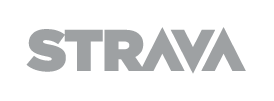 The time is upon us for human resources to step up as a practice and lead. Never before has the work of HR been so critical to organizational success. To meet this challenge requires that we break some old habits. This is the fifth in a series of guest posts from thought leader, Jason Lauritsen, called the 2017 HR Hitlist. Each of the five posts will outline one practice or behavior that HR needs to eliminate, and what they should do instead.
The time is upon us for human resources to step up as a practice and lead. Never before has the work of HR been so critical to organizational success. To meet this challenge requires that we break some old habits. This is the fifth in a series of guest posts from thought leader, Jason Lauritsen, called the 2017 HR Hitlist. Each of the five posts will outline one practice or behavior that HR needs to eliminate, and what they should do instead.
“Golf is a hard game. I’ve had a love/hate relationship with it throughout my life.”
There have been times when I’ve wanted to be good at golf. During one of these times, I became convinced that a buying a new, state of the art set of golf clubs was the solution. If I got better clubs, surely I’d play better.
So, I saved money and ultimately made the purchase. The clubs were spendy, but they were also beautiful. It felt good to show up at the golf course with these fancy clubs. Just owning them made me feel like a more confident golfer.
But when I played with them, I still sucked.
The new clubs didn’t fix my lack of skill. They also didn’t make up for lack of practice.
Golf clubs are tools. And regardless of how fancy or expensive, they are only as good as the hands that hold them.
HR technology is just like those golf clubs.
The explosion in technology innovation means that we have a virtually endless array of technology products to buy and implement within our organization. There are technologies for every problem you can imagine in HR – from employee engagement to new hire paperwork.
And all of these cool technologies hold the promise of solving your most pressing HR problems.
But, just like my new golf clubs, buying technology could end up making you feel better at first, but it won’t solve the underlying issues. Technology is a tool. And unless it’s placed in the right hands, even the best tool can fail you.
If you are considering the purchase of a new system in 2017, or if you already have technology that’s failing to live up to your expectations, take a step back to assess if you’re doing the work required to make your investment a success.
Carefully consider the following three questions before making a purchase:
- Are you clear on the problem? My purchase of new golf clubs assumed that the quality of my tool was the problem, when in fact it was my lack of skill. New clubs made me look better but didn’t fix my game. When considering a new technology, spend time clearly defining what problem(s) you are trying to solve. Investing in a goal management platform won’t help you create greater accountability if your real problem is a management team that is conflict-avoidant. Make sure you’re addressing the real issue.
- Is there a plan? Building a house requires a blueprint to ensure the tools are used in the right way. Do you have a blueprint for how your tools will be used? What are you trying to build? For example, if you’re purchasing a system for employee recognition, are you clear on why and what type of recognition is important to your employees? And, how will you know if your recognition efforts are making an impact?
- Are there skilled hands to use the tool? Implementing the best performance management technology in the world won’t compensate for a manager who can’t have a constructive conversation with an employee or who doesn’t know how to set goals. As you consider purchasing a system, define what knowledge and skills are required by the person using the tool. Feedback technology will be pretty ineffective if you don’t know how to give good feedback. Without skilled hands, a great tool can’t realize its potential impact.
We live in remarkable times. There are so many amazing tools to aid our work in human resources. This technology can amplify and accelerate our efforts to create productive workplaces. But, we must always keep in mind that tools are not the solution. Tools require skilled hands and a plan.





